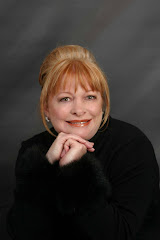6 Fascinating Mind Tricks That Help You Save Money
 Psych
Yourself Rich
Psych
Yourself Rich
Putting
money aside seems pretty straightforward. But, seeing as the
average personal-savings rate is just 5.7 percent (compared to 11
percent two decades ago), it’s definitely easier said than done. “We like to
think of ourselves as rational when it comes to finances, but our decisions are
shaped by psychological and emotional triggers,” says financial behaviorist
Jacquette M. Timmons.
Focus on
Why You Want to Save — Not Just How
If you
want to sock away more cash, coming up with specific ways to accomplish your
goal sounds like a smart idea, right? But a study published in the Journal of
Consumer Research counteracts that notion. It found that people who honed in on
the reasons why they wanted to put aside money (so you’ll be able to go
on that safari you’ve always dreamed of, afford to buy your own home or retire
comfortably) saved more than participants who concentrated on developing
specific techniques for how they’d cut back — say, by going shopping less
often.
Harness
Your Power
The more
powerful you feel before making a financial decision, the more money you’ll
stash, according to research from Stanford University. Before sitting down with
your financial advisor or heading on a shopping trip, think back to a time in
your life when you felt on top of the world. Maybe you successfully asked for a
raise, scored a promotion or even spoke up about an issue important to you.
“People who feel powerful use saving money as a means to maintain their current
state of power,” concluded the study authors.
Put It In
Writing
Here’s
one tiny tweak that can make a huge difference in whether or not you achieve
savings success: Rather than just thinking about your savings goals, jot them
down. Research from Gail Matthews, PhD, of Dominican University found that
people who wrote down their goals were significantly more successful at
achieving them than those who simply pondered them. Sixty-one percent of the
“writers” accomplished their objectives, compared to only 43 percent of the
“thinkers.”
Make
Saving Pleasurable (Seriously!)
Cutting
back, spending less, being frugal…yeah, doesn’t sound like a heck of a lot of
fun, does it? “We associate saving money with feelings of deprivation, with
having to pass up things that we love,” explains Timmons. “And that doesn’t
give us much impetus to follow through.”
So,
try to make the blah process as enjoyable as possible and you’ll be galvanized
to stash more cash. Begin by creating a monthly ritual for evaluating your
savings that you might actually look forward to. Slip into cozy slippers, light
a few candles and pour yourself a cup of tea for example. While we’re at it,
try to go through your investments at the same time and place — say, the last
Sunday of the month at your kitchen table — rather than doing it on the fly.
Plan a
Money Date
It’s
temptingly easy to put off your savings goals when you only have yourself to
answer to. But Matthews’ research shows that people are much more likely
to follow through if there’s someone else holding them accountable: A whopping
76 percent of study participants who submitted weekly progress reports to a
supportive friend were successful.
Source:
Daily Worth






























